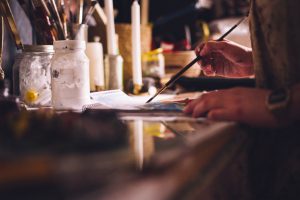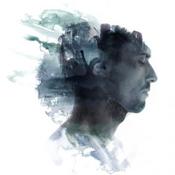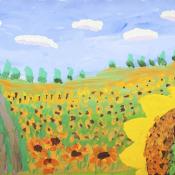 “The real voyage of discovery consists not of seeking new lands, but in seeing with new eyes.” —Marcel Proust’s Remembrance of Things Past
“The real voyage of discovery consists not of seeking new lands, but in seeing with new eyes.” —Marcel Proust’s Remembrance of Things Past
While we cannot go back and change the past or erase painful memories, we can make choices in the present. We can choose how we live our lives, change the lens through which we perceive the world, and look for the lessons along the way.
According to the famous Chinese philosopher Confucius, there are three methods to gaining wisdom: reflection, which is noblest; imitation, which is easiest; and experience, which is bitterest. Bitter though it may be, our experience of pain and suffering has the potential to become our ultimate instrument of transformation and creativity. When we are hurt, slighted, or disappointed, it can be all too easy to follow the path of least resistance and wallow in self-pity. We all do this at one point or another, and can easily remain stuck. But we can also choose another path. We can make the conscious decision to embrace our pain and use it to fuel our creative impulses.
Maya Angelou, Frida Kahlo, Marcel Proust, and Edvard Munch, all recognized as masters in their respective disciplines, are just a handful of the many talented artists throughout time who turned unfathomable human suffering into riveting works of art. Through the process of personal catharsis and healing, each also transformed a society.
No work of visual art so simply and yet so poignantly depicts psychic pain more than Munch’s painting The Scream. Whether inspired by Munch’s sister, hospitalized for insanity at the time, or Munch’s own pain, this work is relatable as a portrait of universal human suffering. Munch shows us that when in the trenches of despair—anxiety, depression, or any number of other mental health issues—our perception of the world around us can shift wildly. In this piece, Munch’s view of his outer as well as inner landscape comes literally screaming off the palette.
When we are hurt, slighted, or disappointed, it can be all too easy to follow the path of least resistance and wallow in self-pity. We all do this at one point or another, and can easily remain stuck. But we can also choose another path.
The works of Kahlo hauntingly depict both the excruciating physical and psychological pain she experienced throughout much of her lifetime. From a deforming childhood illness and, later, a disfiguring accident which led to chronic pain, to the psychic scars of a tumultuous marriage and a social revolution, Kahlo takes unimaginable circumstances and transforms them into what are now renowned works of art—and potentially therapeutic tools. According to the American Medical Association’s Journal of Ethics, Kahlo’s work has been used by psychologists to empower women to talk about their experiences of physical and emotional pain, as in the cases of interpersonal violence, infertility, and chronic illness.
Artistic expression and exploration are invaluable tools in cases of childhood trauma. How does one reconcile that the same hand that betrays, wounds, and abuses is the one that he or she most needs? For countless victims of childhood abuse and neglect, violence, and other crimes of the soul, making sense of the world can seem an impossible task. Scottish poet John Burnside’s own painful and abusive childhood became the catalyst to several established literary pieces, most notably his memoir, A Lie About My Father. In this tale of forgiving, though certainly not forgetting, Burnside seeks to understand his father, an abusive man with alcoholism for whom “cruelty was an ideology,” and in this process comes to forgive the man who raised him.
Angelou’s Caged Bird is perhaps one of the finest poetic expressions of the injustice of racial oppression. Utilizing nothing more than language, she speaks to the pain of discrimination and the “shackles of racism and misogyny.” Also a victim of childhood rape, Angelou describes the “caged bird” whose “wings are clipped” or freedoms deprived, yet who chooses to use his voice for change:
But a bird that stalks
down his narrow cage
can seldom see through
his bars of rage
his wings are clipped and
his feet are tied
so he opens his throat to sing.The caged bird sings
with a fearful trill
of things unknown
but longed for still
and his tune is heard
on the distant hill
for the caged bird
sings of freedom.
In seeking to solve the “puzzle of inequality and hate,” Angelou’s transformation of her experience paved the way for not only personal healing and liberation but, as a fierce civil rights activist, was instrumental in fueling societal change.
One need not be a poet, painter, or activist to implement the tools of creative transformation. Whether it is simply taking a course in painting or starting a journal, expressing rather than repressing may prove invaluable in the healing process. Whether out of societal or personal oppression, every caged bird has a voice—and the potential to transform a society or simply heal a soul.
References:
- Angelo, F. (2013). Pain and the Paintbrush: The Life and Art of Frida Kahlo. AMA Journal of Ethics, 15 (5), 460-465. Retrieved from http://journalofethics.ama-assn.org/2013/05/imhl1-1305.html
- Burnside, J. (2006). A Lie About My Father.
- Lubow, A. (2006). Edvard Munch: Beyond The Scream. Smithsonian Magazine. Retrieved from: http://www.smithsonianmag.com/arts-culture/edvard-munch-beyond-the-scream-111810150/
- Sethis, A. (2013). I Know Why the Caged Bird Sings by Angelou, Maya-Review. Retrieved from http://www.theguardian.com/books/2013/aug/18/maya-angelou-caged-bird-review

The preceding article was solely written by the author named above. Any views and opinions expressed are not necessarily shared by GoodTherapy.org. Questions or concerns about the preceding article can be directed to the author or posted as a comment below.

 Expressive Arts As Means to Heal Trauma
Expressive Arts As Means to Heal Trauma When Things Get Out of Hand: Trauma and the Triune Brain
When Things Get Out of Hand: Trauma and the Triune Brain How Art Therapy Supports Trauma Recovery
How Art Therapy Supports Trauma Recovery

